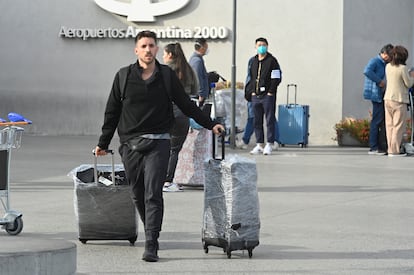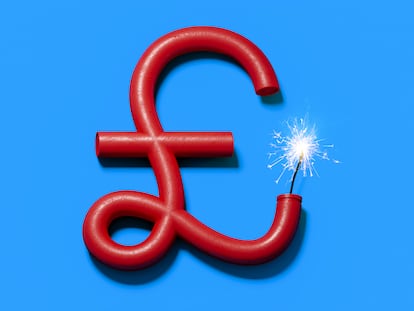Coldplay and Qatar dollars: Argentina devalues its currency by sectors
The South American country now has more than a dozen different exchange rates to restrict access to foreign currency


Although Argentina’s official currency is the peso (ARS), the country’s Central Bank always keeps a close eye on the US dollar (USD) so it can carefully manage its foreign currency reserves. But the ARS-USD exchange rate is also used to gauge the local economy’s overall health, and numerous fiscal crises in the past have sensitized Argentines such that any sharp peso depreciation is viewed as a sign that things aren’t going well and may soon get much worse.
President Alberto Fernández’s administration officially pegs the peso at a relatively high exchange rate: 151.34 ARS to 1 USD (as of October 13, 2022). But dollar purchases have been restricted to such an extent that almost no one can get the official exchange rate because Economy Minister Sergio Massa has developed and implemented a strategy to devalue the peso by economic sectors. To conserve USD reserves, Massa approved a “soy dollar” in September that established a 200 ARS to 1 USD exchange rate for soy exports only. In early October, a “tech dollar” exchange rate was announced for the high tech industry, and a week later two new exchange rates were established: the “Qatar dollar” and the “Coldplay dollar.”
The “Qatar dollar” is named after the venue hosting the World Cup starting in late November. This special exchange rate will hit the pockets of Argentine tourists who want to travel abroad. If they use credit and debit cards to spend more than $300 a month abroad, they will get hit with a higher tax rate on those purchases. This tourist dollar exchange rate recently climbed from 257 to 314 pesos for one US dollar.
This measure by the Fernández administration to discourage foreign travel and purchases is aimed at reducing the $500 million it currently loses every month through outbound tourism, and lower the country’s balance of payments deficit (excess demand for foreign currency).
According to government data, outbound tourism was the service sector that spent the most dollars ($4.9 billion) during the first eight months of 2022. Foreign exchange income from inbound tourism only amounted to $282 million for the same period.
More expensive concerts
British pop band Coldplay is scheduled to play 10 shows in Argentina this month, and local concert promoters will have to pay the band in “Coldplay dollars,” the special exchange rate for paying foreign entertainers: 204 ARS to 1 USD. Tickets to shows and music festivals with international bands will now cost more in Argentina. For example, a season ticket to all the 2023 Lollapalooza shows will cost $280 (57,500 pesos), which is more than the monthly minimum wage of 54,550 pesos.
Before this special exchange rate was established, event organizers could obtain foreign currency at the official rate for a maximum of 180 days, which implies a certain devaluation given the slight but steady depreciation of the peso and rising inflation, which is already close to 80%, year-over-year.
Lastly, the government has also announced an exchange rate of 300 ARS to 1 USD for luxury goods purchased abroad, plus an extra 25% personal property tax on top of all the other taxes such as the PAIS tax on consumption of digital services and the 45% income tax. Airplanes, recreational boats, precious stones, luxury watches and slot machines are some of the items covered by the new exchange rate and taxes, which aim to reduce imports of goods not used in domestic production.
In a statement to news media, public income administrator Carlos Castagneto said: “We want to conserve dollars needed for investment and not use them in unnecessary leakage.” With the latest announcements, Argentina now has at least 14 different exchange rates, each with different values and taxes.
“I’ve lost track of all the dollar exchange rates,” said Buenos Aires Mayor Horacio Rodríguez Larreta, a member of the opposition party. It’s a sentiment shared by many Argentine citizens. Rodríguez admonished the Fernández administration for improvising its fiscal policy and warned: “It’s impossible to invest in Argentina if you don’t know whether you need the Coldplay or Qatar dollar... I think we need to act quickly and show everyone where we’re headed – we need a long-term vision.”
Sergio Massa’s team is looking to pump as much oxygen as possible into the economy before next year’s presidential elections. However, the outlook for Argentina is not optimistic in a stagnant global economy dogged by widespread price increases. The International Monetary Fund forecasts that Argentina’s GDP will grow by 2% in 2023 (half the 4% growth in 2002), and that inflation will hover around 60%, one of the highest rates in the world.
Tu suscripción se está usando en otro dispositivo
¿Quieres añadir otro usuario a tu suscripción?
Si continúas leyendo en este dispositivo, no se podrá leer en el otro.
FlechaTu suscripción se está usando en otro dispositivo y solo puedes acceder a EL PAÍS desde un dispositivo a la vez.
Si quieres compartir tu cuenta, cambia tu suscripción a la modalidad Premium, así podrás añadir otro usuario. Cada uno accederá con su propia cuenta de email, lo que os permitirá personalizar vuestra experiencia en EL PAÍS.
¿Tienes una suscripción de empresa? Accede aquí para contratar más cuentas.
En el caso de no saber quién está usando tu cuenta, te recomendamos cambiar tu contraseña aquí.
Si decides continuar compartiendo tu cuenta, este mensaje se mostrará en tu dispositivo y en el de la otra persona que está usando tu cuenta de forma indefinida, afectando a tu experiencia de lectura. Puedes consultar aquí los términos y condiciones de la suscripción digital.
More information
Últimas noticias
Most viewed
- Sinaloa Cartel war is taking its toll on Los Chapitos
- Oona Chaplin: ‘I told James Cameron that I was living in a treehouse and starting a permaculture project with a friend’
- Reinhard Genzel, Nobel laureate in physics: ‘One-minute videos will never give you the truth’
- Why the price of coffee has skyrocketed: from Brazilian plantations to specialty coffee houses
- Silver prices are going crazy: This is what’s fueling the rally










































